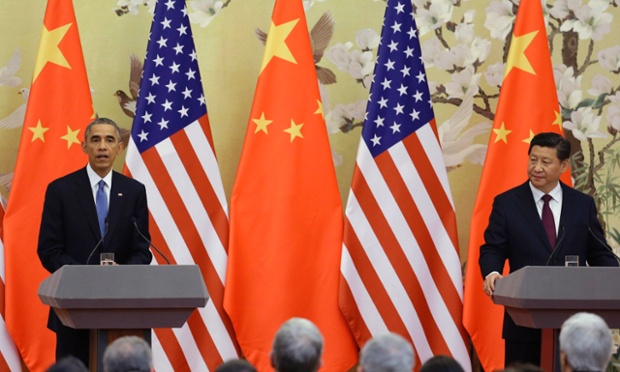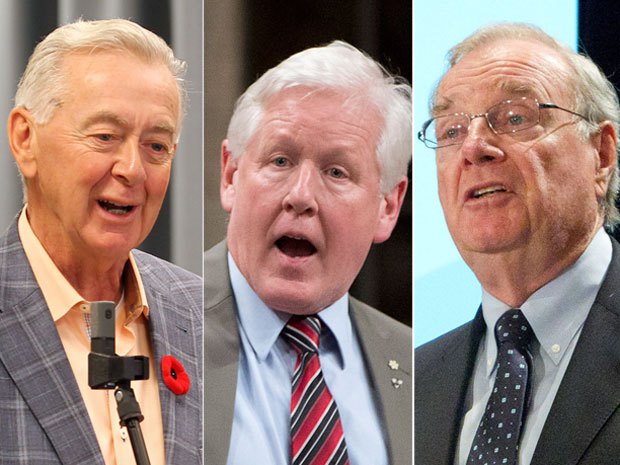November 13, 2014 – I am often perplexed by the number of otherwise intelligent people who wax philosophically about the vast conspiracy by scientists who espouse anthropogenic climate change as a fact. In an ongoing dialog on LinkedIn the past few days I have been told by some that the entire rising CO2 issue is a canard, that I am spreading “BS” in their opinion. They point to oscillations in the Earth’s orbit, changes to solar activity, plate tectonics, and natural chemical processes in the Earth’s crust leading to out-gassing as the reasons for more CO2. They argue that the climate is always changing and that there is no causal link to human activity. So it must be a conspiracy among elitist scientists who are brainwashing the vast majority on the planet and needlessly wasting time and money in pursuit of something for which we have little control or influence.
Apparently, the elitist scientists’ conspiracy is working because China and the United States in the last two days, in a meeting of heads of state, came to agreement on tackling CO2 and other greenhouse gases setting specific targets for capping and then reducing human produced emissions.
The two countries produce 40% of the greenhouse gases we humans contribute to the planet. So having them agree to cooperatively attack the problem represents a huge step in obtaining global agreement on carbon reductions. I can imagine all the climate change deniers freaking out about now, worried about bankrupting their countries in pursuit of a problem that, in their eyes, doesn’t exist.
For example we have Stephen Harper, Prime Minister of Canada, who in the last couple of weeks, in front of the President of France, on a state visit, and in the presence of the House of Commons, baldly lied, stating that Canada was achieving sectorial carbon reductions on target to meet its United Nations obligations. More recently the Prime Minister has stated that there will be no action on climate change if it comes at the expense of Canadian jobs. But Harper’s focus is increasingly fixated on extractive production and the petrodollars it produces for the Canadian treasury as he pursues a balanced budget and the showering of political largesse on those constituents who have voted for him.
Then there is Tony Abbott, the Prime Minister of Australia, who has stated that “coal is good for humanity” and that any meeting of heads of state such as this weekend’s G20 summit, should be focused on job creation, not climate change. The response from 400 Australians today, on Sydney’s Bondi Beach, can be seen in a picture taken by Tim Cole, AFP, Getty Images, mocking the Prime Minister and his government for not putting climate change at the forefront his agenda.
So with the U.S. and China making their announcement this week we may have the breakthrough needed to develop a successor to the Kyoto Protocol that has some teeth. It cannot come soon enough. Yesterday, the International Energy Agency (IEA) released its annual outlook report forecasting demand and consumption tending to 2040.
If you don’t know the IEA, it is an independent agency composed from 29 member countries, most of them fossil fuel producers. Its focus is on energy security and production. Only recently has it moved from looking at supply and development to the implications of fossil fuel consumption and climate change.
Based on current trends the IEA predicts world energy demand to grow by 37% from today’s levels by 2040. Coal energy will plateau in the 2020s. Oil will reach peak energy usage much closer to the 2040 date. Throughout the period leading to 2040 renewables will gain ground rapidly while nuclear, although much diminished, will remain an important contributor to low-carbon energy productio.
The IEA report sees, in 2040, energy supply equally divided between low-carbon options (nuclear, wind, solar, geothermal, tidal, wave and biomass), and fossil fuels (oil, natural gas and coal). Of the fossil fuels, natural gas will be the most significant segment. Its contribution to CO2 emissions will not be offset enough by renewables to keep global mean temperatures from rising only 2 Celsius (3.6 Fahrenheit) degrees. Instead the IEA is forecasting based on current trends a rise of 3.6 Celsius (6.5 Fahrenheit) degrees. That has devastating implications for humanity and biodiversity. The IEA, therefore, is calling for “urgent action to steer the energy system on to a safer path.”
The United States and China may have just kick started the world in the right direction. They are not alone. Over the past five years an “A-list” team in Canada has been gathering to work on developing practical policies that reconcile environmental and economic goals. They call themselves the Ecofiscal Commission. From their website comes the following explanation of what is meant by ecofiscal:
An ecofiscal policy corrects market price signals to encourage the economic activities we do want (job creation, investment, and innovation) while reducing those we don’t want (greenhouse gas emissions and the pollution of our land, air, and water).
Ecofiscal policies offer real incentives for investment in innovative technologies so that we can continue benefiting economically from our natural wealth while also providing better protection to the environment.
The revenue generated from ecofiscal policies can create further economic benefits; for example, by reducing income and payroll taxes or investing in new technologies or critical infrastructure.
Who is behind the Ecofiscal Commission? If you are Canadian you may immediately recognize some of the faces in the picture below. Started by Christopher Ragan, a well-published economics professor at McGill University and former Research Fellow at the C.D. Howe Institute, he took three years to assemble his team. Those who he recruited include members of Canada’s who’s who, former prime ministers and premiers, cabinet ministers, political party leaders, chairpersons of not-for-profits and corporations, and current and former CEOs. He gave them the following challenge: create practical and smart policies for a fairer, more productive and greener economy.
On November 4th they issued their first report. It includes: putting a price on road congestion, air and water pollution, carbon and environmental risk. It recommends giving cities better fiscal tools. And it proposes removing subsidies from those industries that contribute to greenhouse gas emissions, water and air pollution.
For those on this planet witnessing the announcements and reports issued this week we should be both alarmed and grateful. Alarmed because it is clear that the current path will lead us to global mean temperatures considered dangerous by the Intergovernmental Panel on Climate Change (IPCC). And grateful because we are finally seeing leadership in action from the two heads of state of the countries currently responsible for 40% of the CO2 going into the atmosphere today.
Is the agreement satisfactory to those on the frontline of the environmental movement such as 350.org? Probably not. China will cap its emissions but not until 2030. The United States will reduce emissions by 2025, by 28% from levels in 2005. Both leaders have set these targets and both have indicated that exceeding them in a positive way is the real goal, not just meeting them. Both face domestic opposition. But this new and friendly competition between China and the United States is an important race to run because without it we will give our descendants a harsher place in which to live based on the current forecast of the IEA. They should know. There the ones producing the energy and the CO2.













